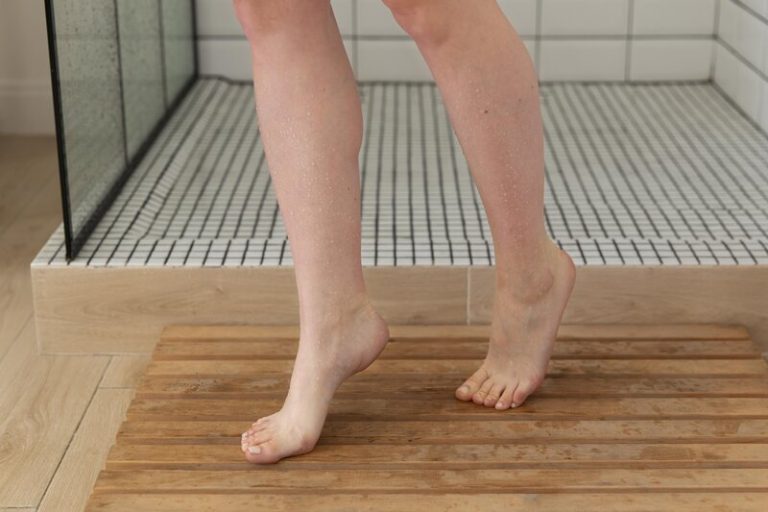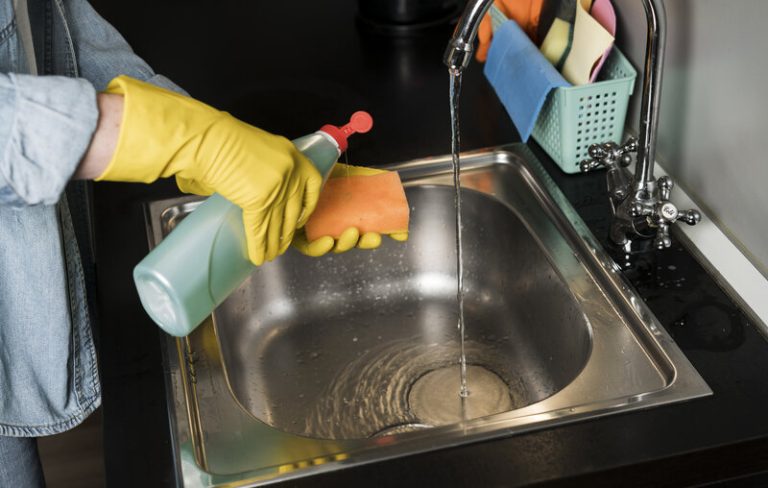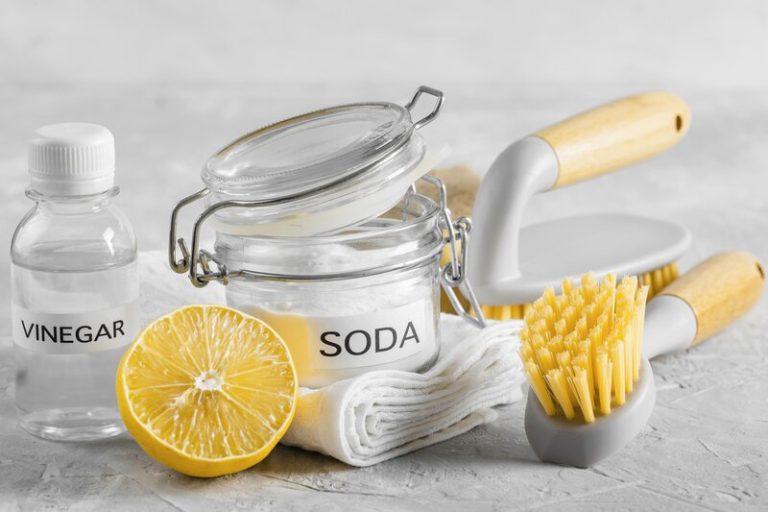Are you tired of feeling overwhelmed by the never-ending cleaning tasks in your home? A daily cleaning checklist could be the solution you’ve been looking for.
We will explore what a daily cleaning checklist is, why it is important, and what should be included in it. From the kitchen to the living areas, we will provide you with a comprehensive guide on how to create a daily cleaning checklist that works for you.
Discover tips on how to effectively use your checklist and make cleaning a more manageable task.
What Should Be Included in a Daily Cleaning Checklist?
A daily cleaning checklist should include essential tasks such as wiping down kitchen worktops, cleaning toilets, hoovering floors, and tidying up living areas to keep your home in top condition day-to-day.
a. Kitchen
In the kitchen, your daily cleaning tasks should include wiping down countertops, cleaning appliances, and ensuring that the sink is free of dirty dishes.
Wiping down countertops is crucial to prevent the build-up of bacteria and keep your food preparation area hygienic. Focus on using a mild detergent or a mixture of vinegar and water for effective cleaning without damaging the surfaces.
In terms of cleaning appliances, remember to tackle not only the visible parts but also the hidden areas where grease and grime can accumulate. Regular maintenance of appliances such as the fridge, oven, and microwave can prolong their lifespan.
b. Bathrooms
Daily cleaning tasks for bathrooms include wiping down sinks, mirrors, and countertops, and cleaning the shower to prevent soap scum build-up.
Regular maintenance of the bathroom is crucial not only for aesthetic appeal but also for hygienic purposes. Apart from the tasks mentioned, it is essential to regularly sanitize the toilet, scrub the floor, and organize toiletries to ensure a clutter-free environment.
By keeping the bathroom clean on a daily basis, you can prevent the growth of bacteria and mould, which thrive in damp environments. Maintaining a fresh scent can create a more pleasant experience for users.
c. Bedrooms
In the bedrooms, daily tasks should include making the bed, tidying up, and ensuring that surfaces are dust-free.
Maintaining a clean bedroom is more than just about appearances. It can significantly impact the overall cleanliness and organisation of your home. By keeping your bedroom tidy, you prevent dust and clutter from accumulating, which can easily spread to other areas of the house.
When you make your bed daily, it sets a positive tone for the day and instantly makes the room look more put together. Organising personal items in the bedroom not only reduces visual chaos but also makes it easier to find things when you need them.
d. Living Areas
Daily cleaning tasks for living areas should include vacuuming floors, dusting surfaces, and organising clutter to keep the space inviting and comfortable.
To maintain a clean and organized living area, it is crucial to establish a regular routine. Beginning with vacuuming the floors to remove dirt, dust, and debris, this task not only enhances the appearance of the space but also contributes to a healthier indoor environment.
Dusting surfaces such as shelves, tables, and electronics is equally important to prevent the accumulation of allergens and maintain a fresh atmosphere. Organising clutter by putting away items and decluttering common areas helps create a sense of order and relaxation in the home.
e. Laundry Room
In the laundry room, daily cleaning tasks should include wiping down surfaces, organising laundry supplies, and ensuring that the area is free of lint and dust.
Maintaining cleanliness in the laundry room is crucial not only for hygiene but also for efficiency. A clutter-free and well-organised space can make tasks such as sorting, folding, and ironing much easier and more enjoyable. Dust and lint buildup not only create a messy appearance but can also affect the performance and lifespan of laundry appliances. Regularly wiping surfaces, cleaning the lint trap in the dryer, and keeping the floor clear of debris are essential practices to ensure a functional and pleasant laundry room.
How to Create a Daily Cleaning Checklist
Creating a daily cleaning checklist involves several steps that help to ensure every area of your home is regularly maintained, such as:
a. Assess Your Cleaning Needs
The first step in creating a daily cleaning checklist is to assess the specific cleaning needs of your home, identifying high-traffic areas and common messes that require daily attention.
High-traffic areas such as kitchens, bathrooms, and living rooms tend to accumulate dirt and grime faster than other spaces in the home. These areas often require frequent wiping, mopping, and sanitizing to maintain cleanliness.
Identifying common messes like food spills, pet hair, and dust accumulation can help prioritize tasks and allocate time efficiently. By targeting these recurring issues, you can prevent them from escalating into more significant cleaning challenges.
b. Divide Tasks by Frequency
Once you have assessed your cleaning needs, divide the tasks by frequency, categorising them into daily, weekly, and monthly tasks to create a balanced cleaning schedule.
Daily tasks typically involve activities that require immediate attention and are crucial in maintaining the cleanliness of your space. These may include making the bed, doing dishes, wiping down surfaces, and taking out the rubbish.
On the other hand, weekly tasks delve a bit deeper into cleaning, targeting areas that may not require daily attention but still need regular maintenance. This could include vacuuming, mopping the floors, cleaning bathrooms, and changing linens.
Monthly tasks are the more extensive cleaning duties that are essential but can be performed less frequently. These might encompass tasks like deep cleaning appliances, washing windows, organising closets, and sanitising high-touch surfaces.
By organising your cleaning duties in this manner, it ensures that your space remains consistently neat and tidy without feeling overwhelmed by a long list of chores.
c. Prioritize Tasks
Prioritising tasks is crucial in a daily cleaning checklist, ensuring that essential tasks are completed first to maintain a clean and functional home environment.
By focusing on the most critical cleaning tasks, you set the foundation for a more organised and hygienic living space. One effective strategy is to identify high-traffic areas that accumulate dirt quickly, such as the kitchen and bathrooms, and address them promptly. Efficiency is key in managing your time effectively, so consider creating a cleaning schedule that allocates specific tasks to different days of the week. This way, you’ll stay on top of maintenance without feeling overwhelmed by a mountain of chores.
d. Assign Tasks to Specific Days
To create a manageable cleaning routine, assign specific tasks to certain days of the week, ensuring that your daily cleaning checklist is balanced and effective.
Start by dividing your cleaning tasks based on their frequency and intensity. For example, designate Mondays for deep cleaning tasks like scrubbing floors and cleaning windows.
On Tuesdays, focus on laundry and organising cluttered areas.
Wednesday can be reserved for bathroom cleaning, while Thursday could be dedicated to dusting and vacuuming.
By distributing tasks throughout the week, you avoid overwhelming yourself with too much work on a single day.
Remember to adjust your schedule based on personal preferences and the size of your living space for maximum efficiency.
Tips for Using a Daily Cleaning Checklist
So that the daily cleaning checklist doesn’t go to waste, here are some usage tips that you can follow:
a. Set Realistic Goals
Setting realistic goals is key to maintaining a daily cleaning checklist, ensuring that tasks are manageable and can be completed within your available time.
When determining what tasks to include in your daily cleaning routine, it’s essential to consider your schedule and capabilities. Think about how much time you realistically have each day to dedicate to cleaning and what areas of your home need the most attention. By breaking down your cleaning tasks into smaller, achievable goals, you can prevent feeling overwhelmed and ensure that you stay on track.
To make your cleaning goals even more achievable, consider creating a cleaning schedule or checklist. This can help you stay organised and focused, making it easier to track your progress and prioritise tasks accordingly.
b. Involve Your Family or Roommates
Involving your family or flatmates in the daily cleaning routine can make the tasks more manageable and promote a shared sense of responsibility for maintaining a clean home.
Assigning specific cleaning tasks to each member based on their preferences and strengths can help streamline the process. Encouraging open communication about cleaning schedules and expectations can avoid misunderstandings and foster a cooperative environment.
c. Make Adjustments as Needed
It’s important to make adjustments to your daily cleaning checklist as needed, accommodating changes in your schedule or unexpected events to maintain flexibility.
For instance, if you find yourself running short on time due to a last-minute appointment, focus on completing the most critical tasks first such as wiping down surfaces or doing a quick vacuum. Flexibility also means being adaptable when unexpected visitors are on their way by prioritising tidying up common areas instead of deep cleaning less frequented spaces. Keep in mind that being flexible doesn’t equate to neglecting your cleaning duties but rather finding a balance that suits your current situation.
d. Use a Timer
Using a timer can help you stay focused and efficient with your daily cleaning tasks, ensuring that you complete each task within a set amount of time.
When you set a timer, you create a sense of urgency and purpose, preventing distractions and procrastination. This method encourages you to work steadily and consistently, breaking down larger cleaning projects into manageable chunks. Timing techniques allow you to track your progress accurately, helping you allocate time efficiently to different areas of your cleaning routine.
e. Reward Yourself
Rewarding yourself after completing your daily cleaning tasks can provide motivation and make the process more enjoyable, encouraging consistency in maintaining your home.
Small rewards can act as positive reinforcement, motivating you to tackle chores with more enthusiasm. For instance, you could treat yourself to a delicious snack, watch an episode of your favourite show, or take a relaxing bath after finishing your cleaning tasks.
These small indulgences help break up the monotony of cleaning and create a sense of accomplishment. Setting up a reward system can also make mundane tasks feel more exciting and help you stay focused on the end goal of a clean and organised living space.
There you have it, the complete daily cleaning checklist and usage tips that you can follow. However, keeping up with these tasks can be both time-consuming and overwhelming, especially with a busy schedule.
To ensure your home remains immaculate and welcoming without the stress of daily upkeep, let TEKA Cleaning handle it for you. Our skilled team offers comprehensive residential cleaning services designed to maintain the highest standards of cleanliness and hygiene. We tailor our services to meet your specific needs, providing a thorough clean that covers every detail, from the floors to the ceilings.
Don’t let the burden of cleaning take away from your time and relaxation. Contact us today at 01233 751 544 to schedule your professional cleaning service. Enjoy a spotless home with the convenience and expertise of TEKA Cleaning. Act now to experience the difference our dedicated team can make!
Read also:











